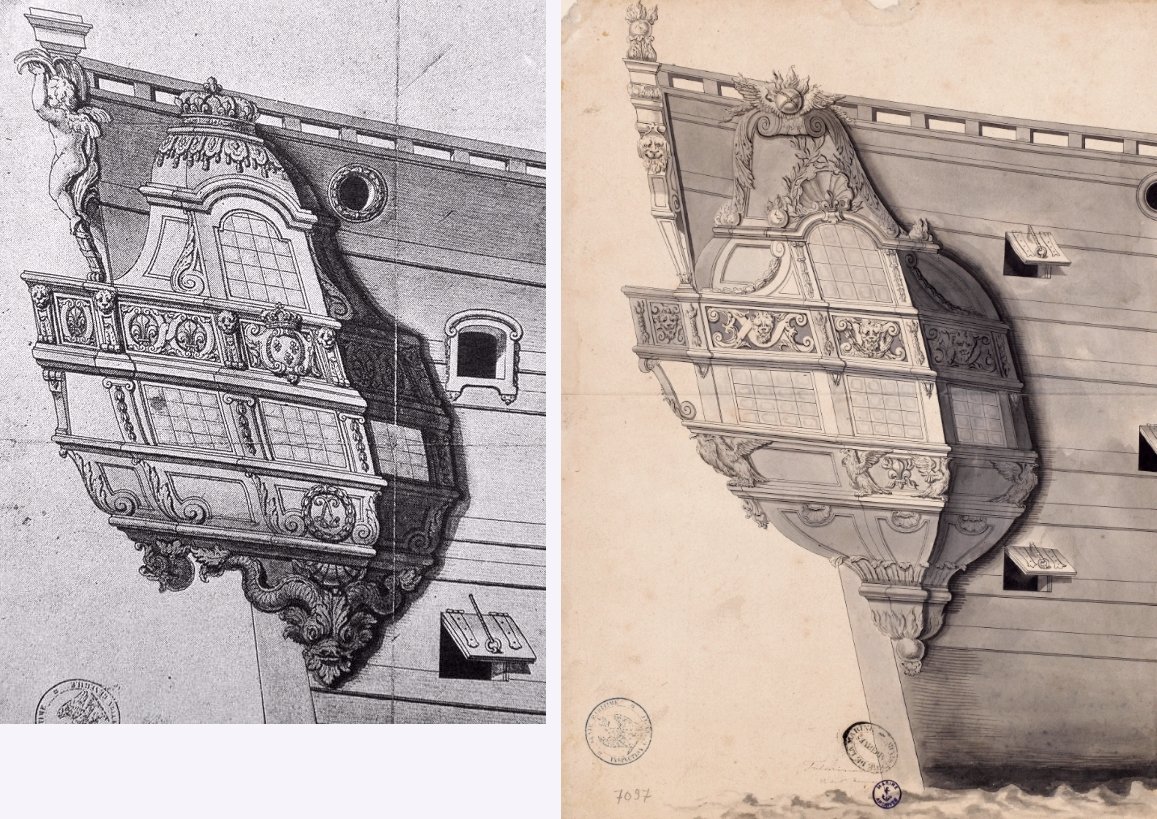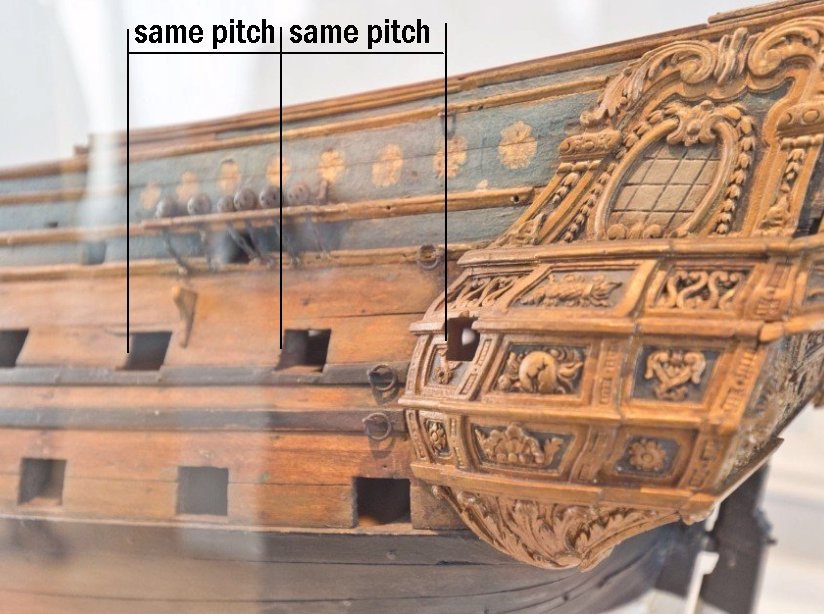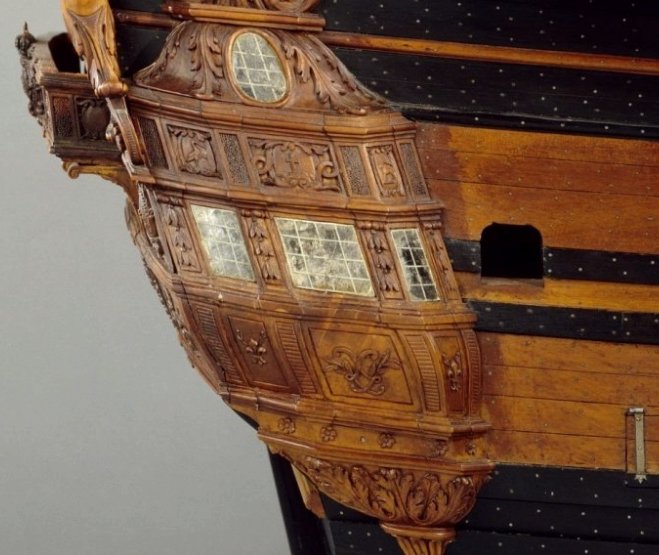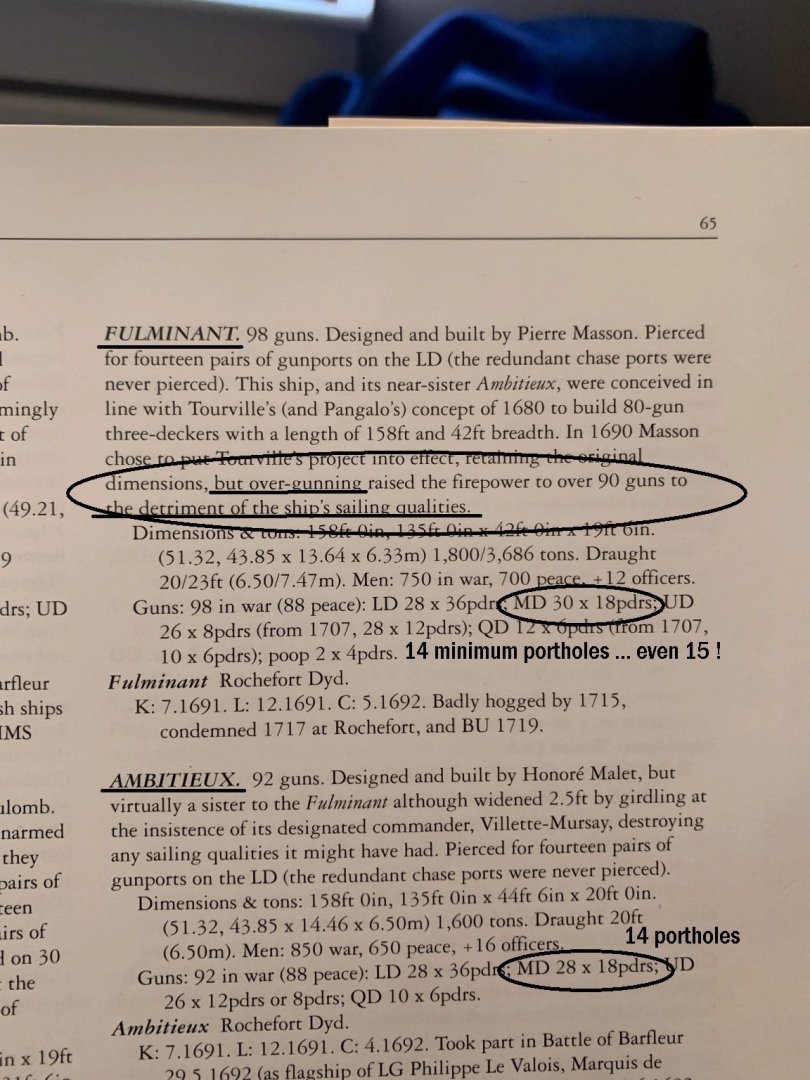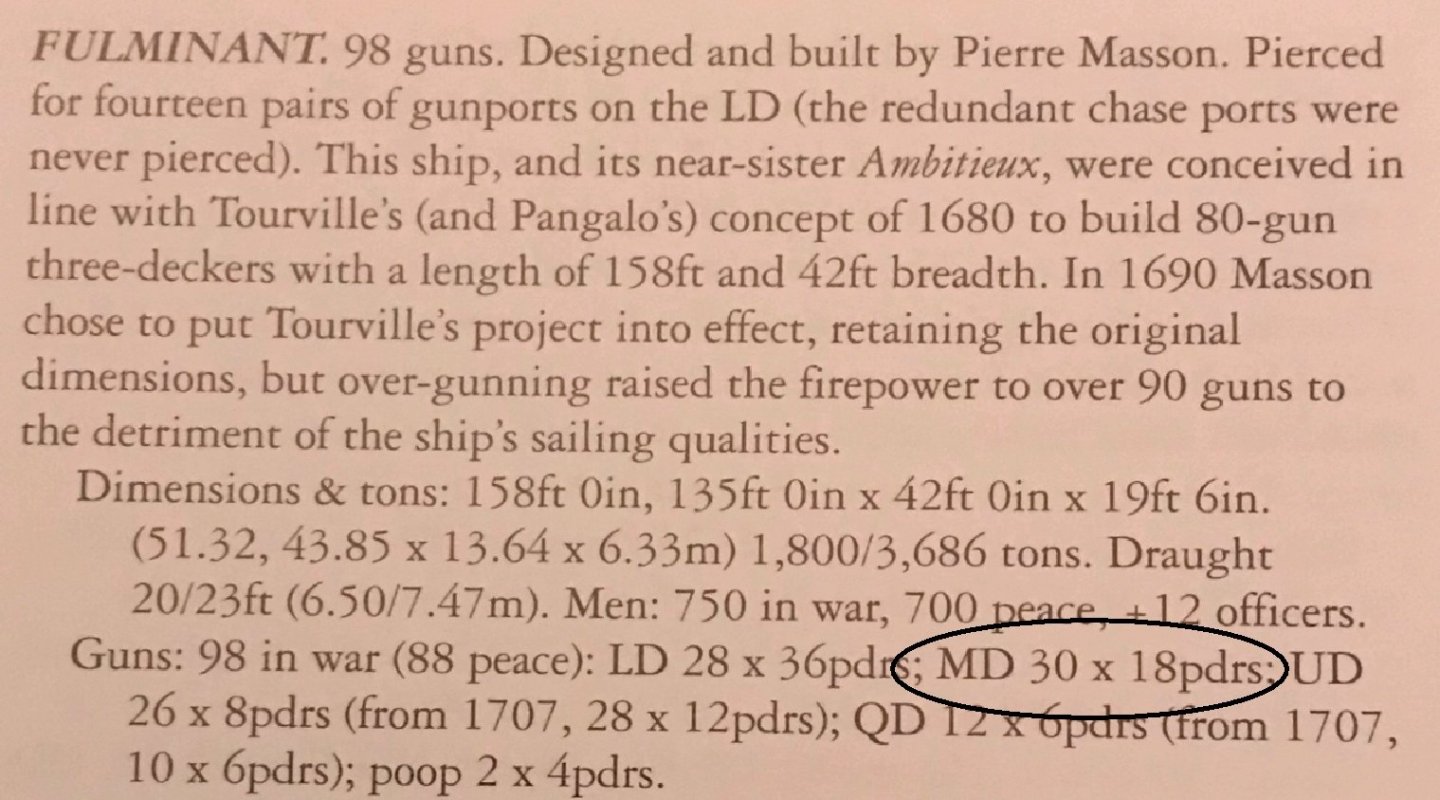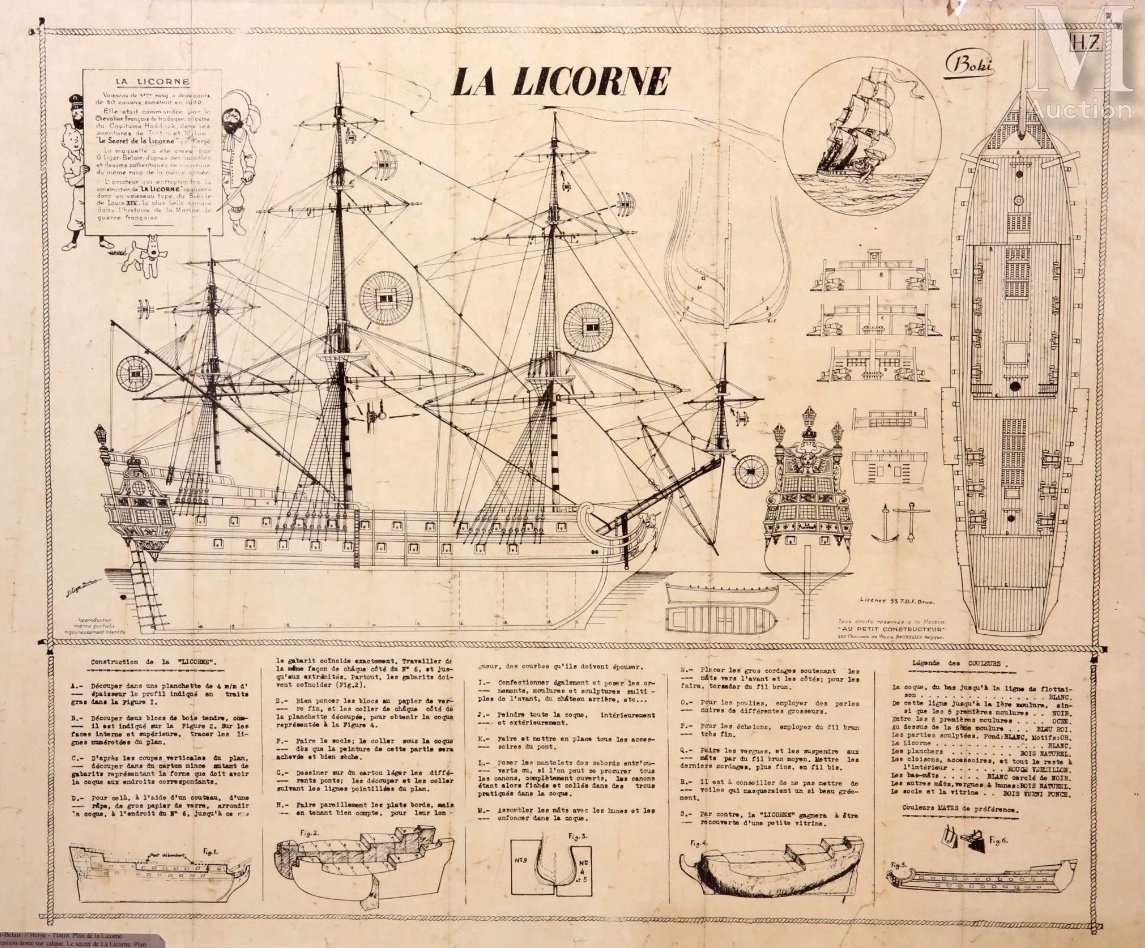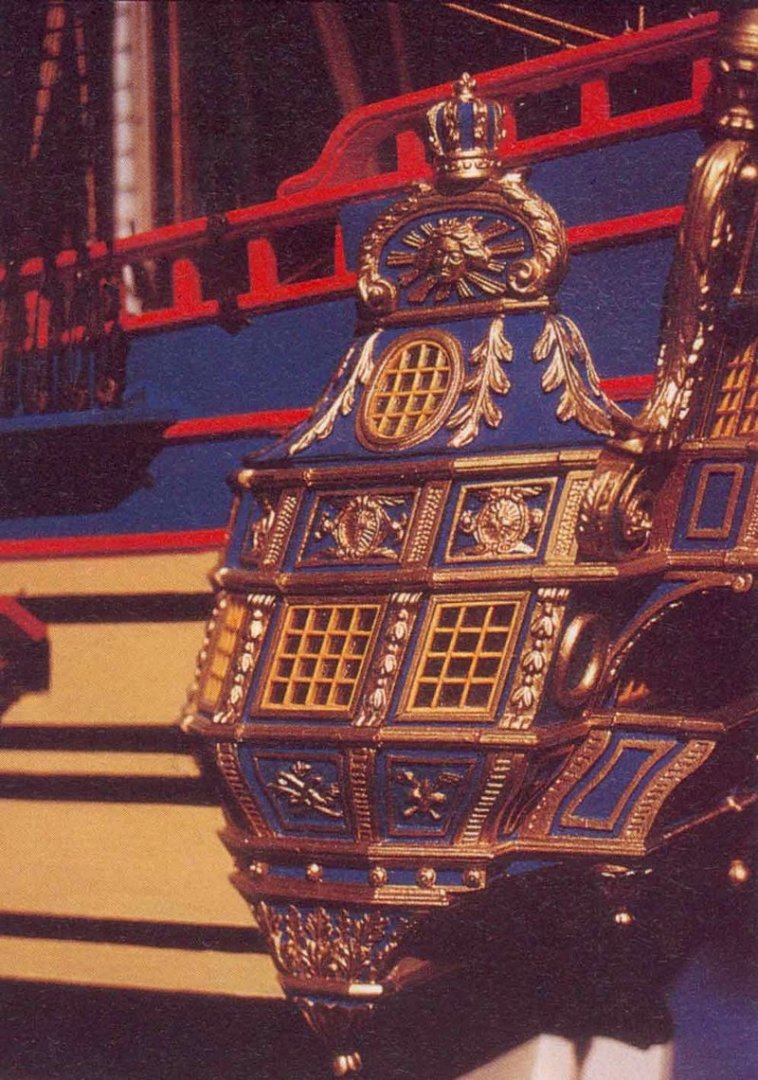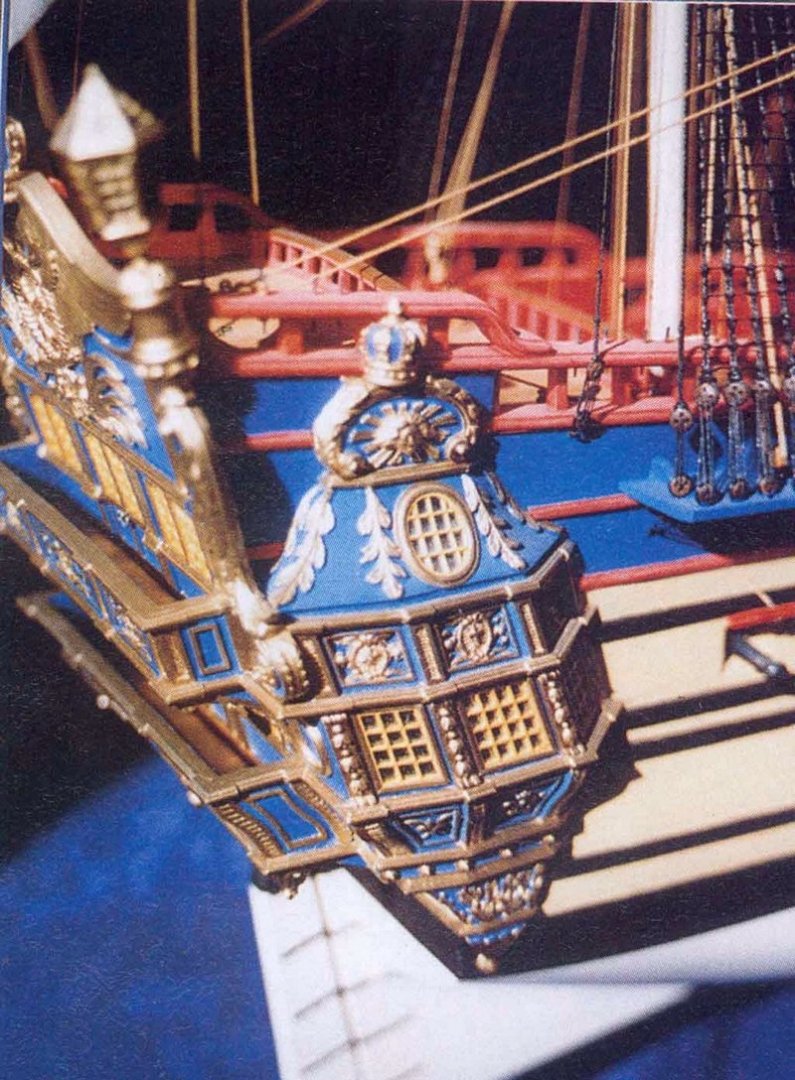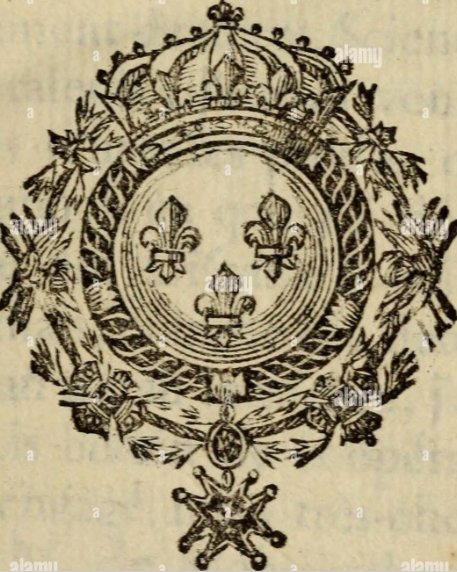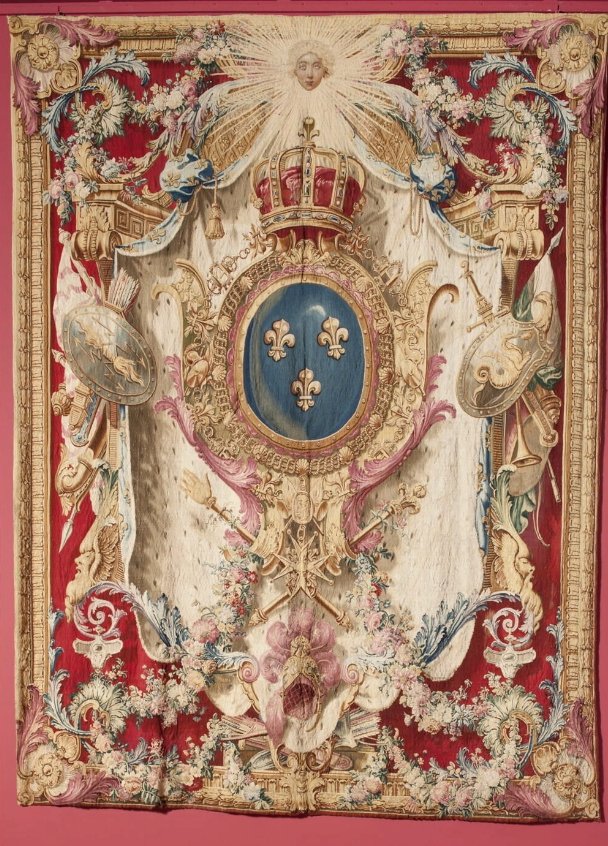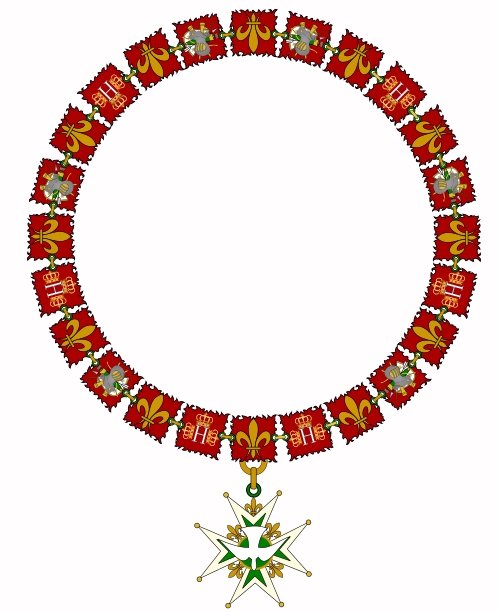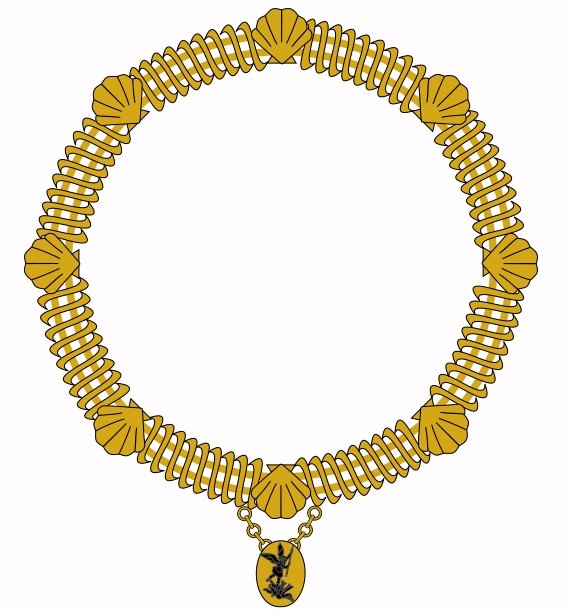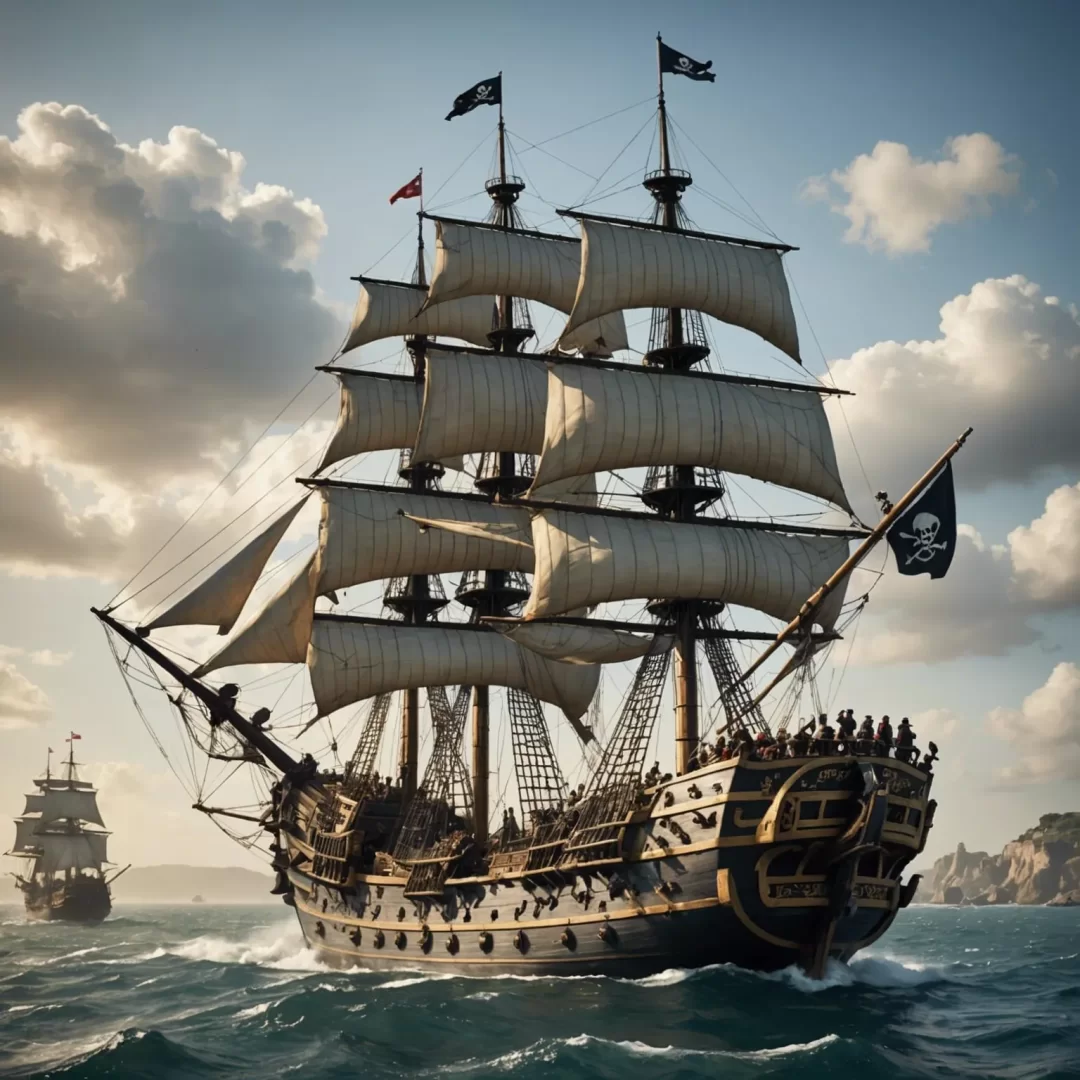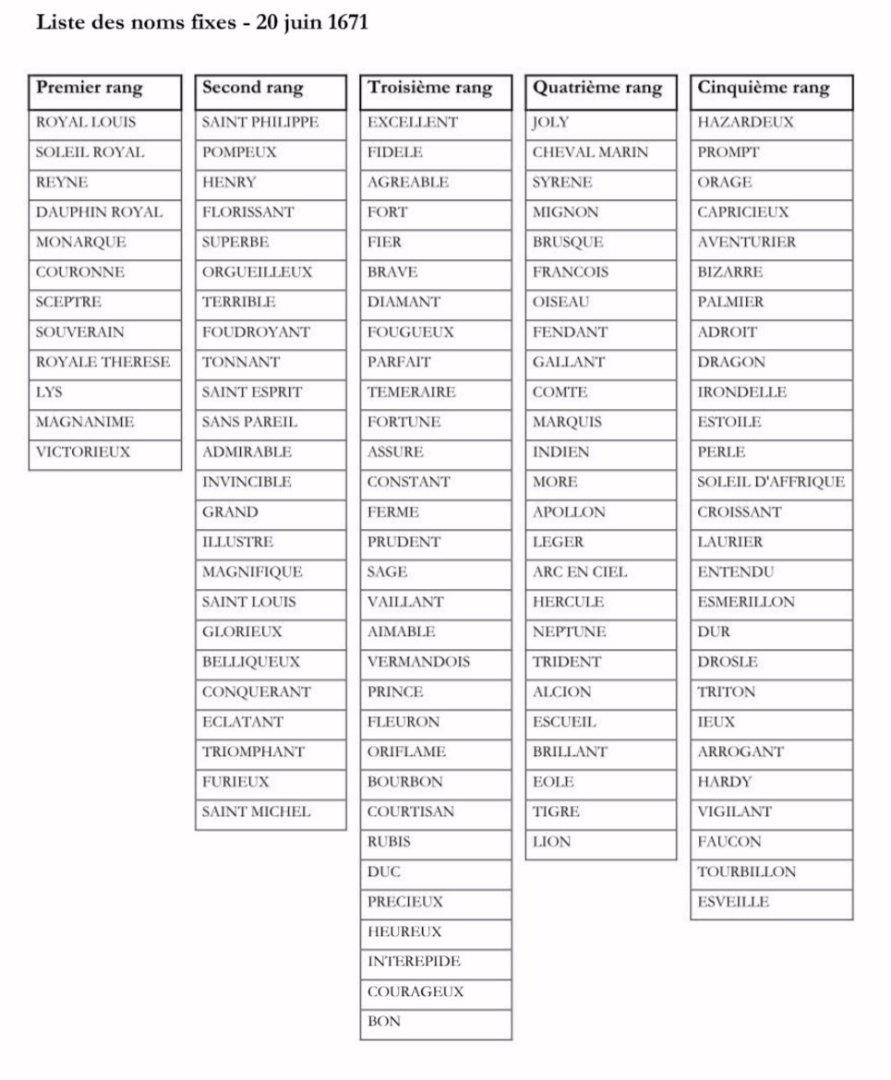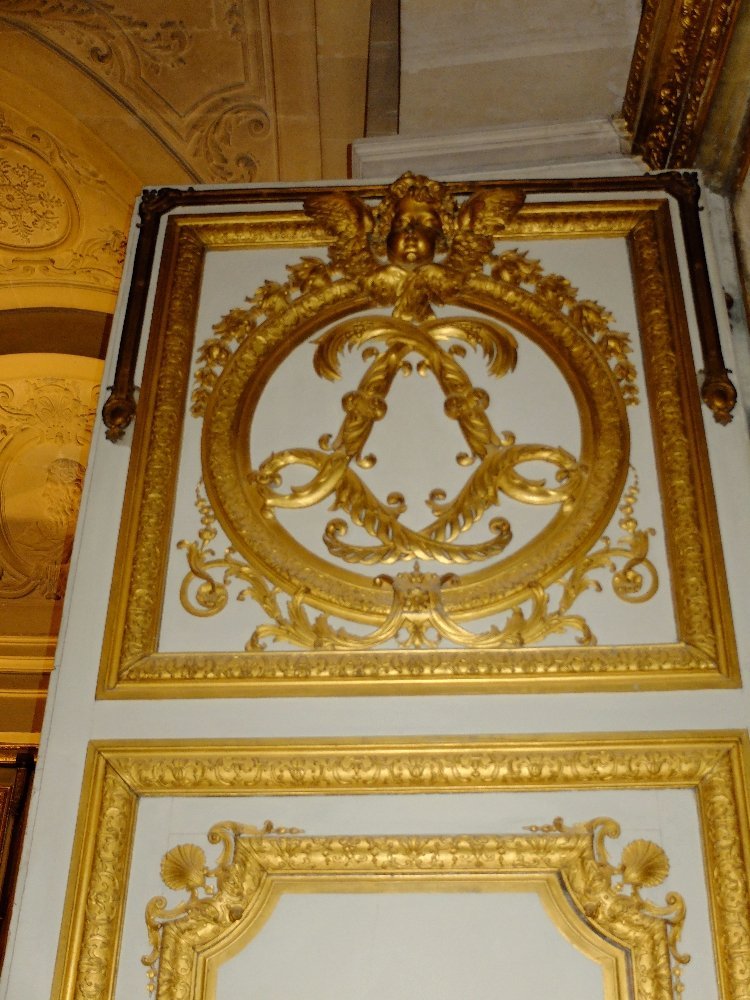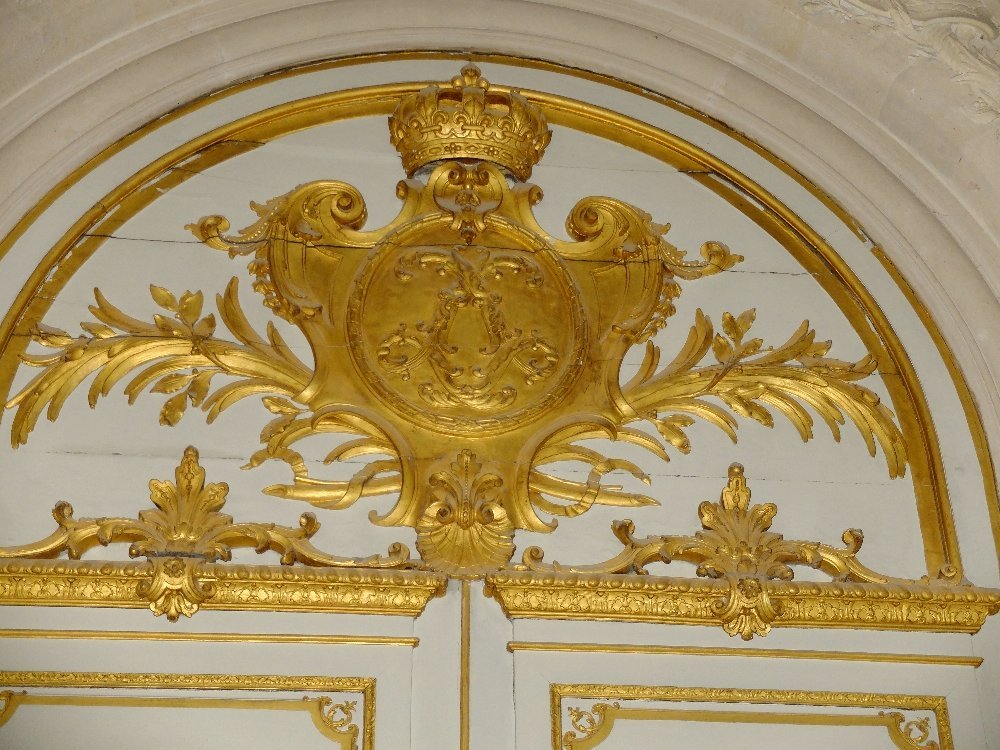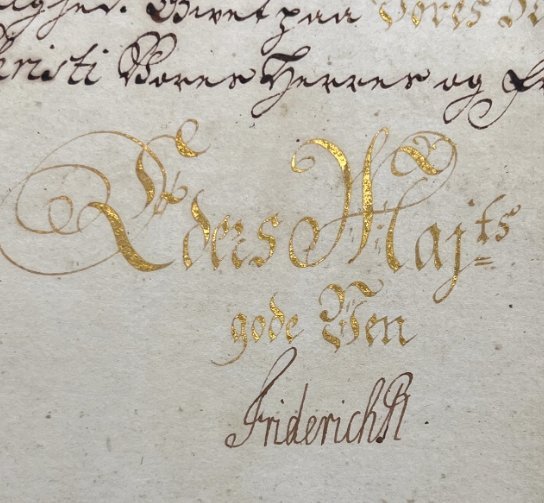-
Posts
69 -
Joined
-
Last visited
Content Type
Profiles
Forums
Gallery
Events
Everything posted by empathry
-
Louis XIV visited several naval arsenals during his reign ; Dunkirk, Marseille and Toulon. - In 1660 and 1665, he visited Marseille and Toulon. - In 1680, Louis XIV visited Dunkirk to attend naval exercises. Therefore, during it's 72 years of reign, this is the (incredibly low) number of royal visits dedicated to naval arsenals ! We also know that Berain never set foot in an arsenal. ... so how were important decisions made ? In a bizarre (and funny) manner : by scale model exhibitions navigating on the Grand Canal at Versailles ! In 1680, Blaise Pangalo built a scale model of a double-decker ship, which had to be compared with other scale models built by other master shipwrights (such as Laurent Hubac) ; Pangalo's model ship was then presented to the King on the Grand Canal at Versailles. Blaise Pangalo worked as a master shipwright from 1681 to 1689 in Toulon and Brest, and in 1689 he was permanently attached to the port of Brest. This means that the Ambitieux and Fulminant, built in 1691, were never built by Pangalo, but by Pierre Masson (for the Fulminant) and Honoré Malet (for the Ambitieux) respectively. This gives Boudriot's monograph a certain margin of error, since the << Pangalo + Ambitieux >> combination never existed historically. Moreover, Berain drew two sketches ; that of the Ambitieux and that of the Fulminant, and he must (normally) have known that these would be constructed as twin ships ... ... so why are the port holes different on those two sketches ? This suggests that Berain is primarily an artist (and courtier), not a naval architect, and that his sketches could be interpreted in a very large manner. Philosophically speaking (and in the absence of the ability to go back in Time), nobody on Earth will ever be able to form a historically accurate representation of what the Fulminant and the Ambitieux were, and the wish to respect Boudriot's monograph at all costs, in all its details, is not necessarily a guarantee of total historical veracity. I suppose that ship models main purpose, while navigating on the Great Canal was, first, to flatter the King (le roi Soleil) and that all which was possibly glittering and ornamented was warmly welcomed and encouraged, much more than the actual nautical capacities of those represented scale vessels. The Fulminant is one of the last (beautifully decorated) vessels built within the period called "première marine de Louis XIV" which ended in 1692 with the battle of Barfleur, where (just after the battle) Tourville received orders to beach his ships near the Tatihou Island. The Ambitieux (and the well known Saint Philippe) finished their career there. And then, Colbert reconstructed "la Royale" again, during this further period called "deuxième marine de Louis XIV" ... with strong limitations and restrictions concerning those costly (and heavy) profusional decoration. Those vessels models we are making out (this being our beloved hobby), from the "first marine of Louis XIV" period are (logically) far more beautiful and aesthetical to construct !
-
The unbreakable rule for the arrangement of guns has always been (since Colbert) a minimum (and constant) distance to be respected between two guns side by side, so that their two crews do not jostle each other during combat. It should be noted that Frölich's model has a defect in the 2nd battery equipped with 18-pounder guns. Frölich model has 13 portholes, whereas historical references give 14 or even 15 portholes. Precisely speaking, the Ambitieux should have had 14 gun ports (as per historic references), while the Fulminant should have had 14 or even 15 gun ports (historic references are somehow controversial about 14 or15) ! You therefore should try to add an extra porthole to the 2nd deck in order to point out this (slight) difference between Ambitieux and Fulminant. Moreover, it's clearly stated that Fulminant is described to be over gunned v/s Ambitieux. Instead of asking yourself the question : should this supplementary 14th gun port be situated through the door leading to the officers' toilets (or not?), it could maybe clever to calculate : If I respect the "pitch" minimal obligatory distance (standardised at the time of Colbert) between the gun portholes of the 2nd battery, where should I pierce my new 14th porthole ? We have seen (on several models) that the rear castles can be pierced to create an additional gunport and we also observe that in the 18th century, the main room (the counsel or dinner room) accepted cannons that were rolled and positioned only at the time of combats. You should now calculate, from bow to stern, by incrementing by one new interval (pitch) to see where the 14th gun's port's position could be ... and how this can be arranged either into or outside the decorated rear castle. I hope it helps.
-
I beg you to listen carefully to me ; as I'm trying now my best to persuade you (for your own safety) that Time travel isn't possible, simply because the place you arrive at (after your Time travel) is a “normal” place where air molecules "normally"are (and maybe mosquitoes too and microbs) ... How are you going to (are you really able to) push-away those air molecules, mosquitos and microbs (which are taking your new body's emplacement) out of the way ? To avoid this, all you should have to do is travel back in Time, taking care to arrive in an 100 % free and empty place where there are NO other air molecules, NOR mosquitoes and NOR microbs ... i.e. in the absolute vacuum ... then you wouldn't have to “dislodge” all this stuff, while they wouldn't be present in such a perfect vacuum place ... ... but traveling through Time to find yourself into a perfect vacuum environment ... that's hardly an interesting hobby ! I HOPE IT HELPS ! Important notice : Time travel is a dangerous business, so don't leave your kids alone when they're tinkering with weird machines without telling you what they'll be used for !
-
I like your analogy with the Jules Verne's Nautilus ; with this fantastic decor made by Disney, including extra large glass portholes ... and even an organ ! ... but maybe should we stick a little more to historic reality as per the number of pierced portholes : - We know that the Fulminant was pierced @ 14 for the lower deck ... there is no problem about it and this doesn't concern the port windows. - For the mid deck, it was pierced @ 15 (for it's 18 pdrs guns) as the best reference historic study by Demerliac indicates ... ... anyhow, some other information indicates "pierced @ 14" ... but I am quite certain that "15" is more correct because the Orgueilleux and the Formidable, which were 1st rank vessels launched earlier (in 1690), were already pierced @15 for the 2nd battery, whilst their dimensions being a little bit shorter than the Fulminant (and the same is for the Ambitieux pierced @ 15 portholes for the 2nd battery). Moreover, the Ambitieux, Fulminant's sister ship, had the (bad) reputation of being overgunned ... which was not good for its inner sailing maneuverability. Honestly, this point (14 or 15 portholes for the 2nd battery) can be fairly discussed as there are as many "pro" examples" than "against" example (please refer to the attached files). (a) Then, PRACTICALLY, your model should (I suppose) show 15 portholes for the 2nd battery. In a logical point of view (and I rejoin here your conclusions), all the windows N°s 2 ; 3 and 4 should be false, because a real window with glasses would explose due to the blast of your own cannons when firing. Moreover, your idea for 4 windows instead of 3 may be interesting, as far as you can increment the 15 portholes REGULARLY along the hull of the vessel ; then, the question is : are the 15 portholes equally and regularly balanced with 3 or 4 false windows ? (b) Another alternative is to pierce it @ 14, if it appears that the implementation of the extra portholes (one or two) into the rear castle appears too inadequate or aesthetically disastrous.
-
Thank you Hubac's Historian for this reminder about the Soleil Royal, which I shall endeavor to complete, as there have been 2 Soleil Royal ... and even 3 ! Let me tell you their interesting stories ! The “historic” first Soleil Royal (N° 1) was built in 1669 and remained unused (non-operational) for 14 years, from 1671 to 1685, when it was literally left to “rot” along the quays of La Penfeld. Its completion and total reconstruction (restoration) has been undertaken in 1688, including the entire decorations of the rear castle ; let’s name it “Soleil Royal 1 bis”. An interesting further information ; this restauration was held under the supervision of the famous Louis Hubac. Thereafter, it (N° 1 bis) was burnt at the Battle of La Hougue in June 1692. Then, angered by this loss, king Louis XIV decided to rename another 1st line vessel, originally called the “Foudroyant”, to “Soleil Royal”. As for the Tanneron magnificent model, it dates 1840 and, according to Claude Lemineur's study, it seems highly likely that this model was mainly based on the “Soleil Royal 1 bis” (refitted in 1688), the new drawings for which were carefully been preserved in Lorient.
-
Hello HAIIAPHNK ! The progress of your work is really beautiful and meticulous ; it's indeed first-rate work that we can admire here, and this is a tribute to “real” handwork, which we see less and less often, so much is it driven out by laser pre-cut kits and computer-made sculptures. Now, let's try to answer your important question about the side windows : (a) first of all, there's a naval military constraint to consider : a warship is built to receive cannonballs (during combat), so it's not encouraged to put too many "real" windows on the sides (because it structurally reduces the ship's strenght). (b) On the other hand, there's the aesthetic example of "real" side windows as drawn by Hergé (in The Secret of the Unicorn), which makes us fantasize aesthetically about beautiful side openings ... How do you choose between these two trends (a) or (b) ? ? ? Should we absolutely respect the notion of naval engineering structure and limit "true" side windows, or can we somehow dream, a little bit, and imagine a more pretty side profile of the castle, by putting in beautiful “true” windows (instead of "false" windows) ... and which ones to be chosen ? That's here the crucial question to be discussed !
-
Happy New Year dear Sasha ; Reading (eagerly) your sudomodelism adventures really makes me saving me a subscription to Netflix, whilst your adventures are worth a Netflix serie ! I am thinking about your glueing problem, and a logical opinion could be that it's not really worth trying to select a glue permitting the quite unprobable occurence of having a modification to do (or a little repairing). I have myself some ship models I realized three decades (and more) ago and sometimes, the wood works is such a manner that cracks may appear, but whilst the ship models are protected by glasses, there is no wind, no dust, and no need to clean the model, so that the probability of a little bit of something needing a fixing is quasi nil. Your photos are always excellent ! I hope for all the people you love the best, and particularly for you a good health !
-
We have in France a poem (By Jean de Lafontaine) telling a fox who (after making many complimentings) eats a cheese belonging to a crow : Master Crow perched on a tree, Was holding a cheese in his beak. Master Fox attracted by the smell Said something like this: “Well, Hello Mister Crow! How pretty you are! How beautiful you seem to me! I’m not lying, if your voice Is like your plumage, You are the phoenix of all the inhabitants of these woods.” At these words, the Crow is overjoyed. And in order to show off his beautiful voice, He opens his beak wide, lets his prey fall The Fox grabs it, and says: “My good man, Learn that every flatterer Lives at the expense of the one who listens to him. This lesson, without doubt, is well worth a cheese.” The Crow, ashamed and embarrassed, Swore, but a little late, that he would not be taken again. This pretty looks like the Kolobok's story you told us ! And as for the spherical "bombs" you are sculpting in tagua, maybe should you interested to know about natural veneered wood spheres, used in rosaries. I send you a photo of them.
-
Hi there ! I remain highly favourable to the "ancient traditional style" workmanship, sculpting the pearwood with one's hands, just as you do Haiiaphnk ! Realizing a model is a true adventure with high (enlighted) moment ... and also more difficult moments ; and the new generations prefer to throw away those (supposed) difficult moments by using computers. Therefore and for the fun (because I don't wish start a combat), I wish to post hereunder the realizations of some vessels made by AI programmed softwares ... Please feel free to comment !
-
Hi there ! There's a saying that “perfection is achieved when there's nothing left to remove”, and that's the impression given by the latest photos taken from the upper side dome. The whole thing you've created blends in so nicely with the initial support (the customer's base) you're working on, that it seems as if your work had already been done all along. There's no visible discrepancy (difference / gap) between your personal work and your customer's initial support, as all harmonizes well ! Well done chap ! The sculpting phase is about to begin ! What I appreciate through your "step-by-step" images (and comments) is that you are both a geometer and an artist. In so many (complicated) shipmodels of this type, we often see flaws due to geometrical difficulties and/or flaws due to artistic (sculpture) difficulties. We are eager to see how it all will turn out as we are now probably predicting a highly skilled finished shipmodel.
-
... and in such a case, why not set the entire ship model on fire and analyse the wave lenght(s) emitted by its raw products through a spectrometer ? The customs would get from its ashes all the requested (legal) answers ! Are we turning to Ray Bradbury Farenheit 451 ? Will books be burnt ? Will art be burnt ? We'll ourselves be burnt and euthanized (... obviously for "our" security) in order to fertilize this planet ?
-
Hello Aleksandr, you are right and I am right too ! When I wrote that French copied Dutch, it is mostly concerning the technical (naval) point of view, being understood that Dutch vessels had a smaller draught that French ones, due to the fact that French used mostly iron studs in their construction (heavier) whilst Dutch used wooden studs (which do not rust). Dutch vessels were more maneuverable whilst French resisted betterly to gun fire. As for the decorations themselves (the artistic point of view), overdecorating a vessel for the King's advantageous dominance showing started by the English, and was followed by the other Navys (including France). It's extremely tricky to find out what exactly specific decoration is corresponding to such vessel, as vessels often are identically named. We know about Ambitieux I (1691) and Ambitieux II (1692). Something important to point out is the june 1671 royal list of "fixed names". In 1671, the "Royale" has 120 vessels and Louis XIV ordered that their names all be standardized. Hereunder is enclosed the "fixed names" list of all "authorized" names to be used for the King's vessels. Doing this was clever, as if a vessel was sunken or lost (like Ambitieux I), he was immediately remplaced by another one, Ambitieux II, bearing the same name, so that the vessel's name was always kept alive. = = = = << Mémoire du Roy au Sieur de Seuil Il verra par la liste et la lettre de sa Majesté cy jointes la résolution qu'elle a prise de donner des noms fixes à tous ses vaisseaux de guerre, frégates légères, flutes et brûlots de l'arsenal de Brest en changeant les anciens noms qu'ils avoient en d'autres qu'elle veut qu'ils ne changent jamais. C'est-à-dire que lorsqu'un vaisseau ne sera plus en estat de servir, il en sera baty un autre en sa place qui sera appelé du mesme nom. Et comme sa Majesté a à présent le nombre de vingt-six vaisseaux de guerre qu'Elle veut estre pareillement fixe, elle ne désire plus en faire bastir qu'à mesure qu'il y en aura quelqu'un qui ne sera plus en estat de servir. Le dit Sieur de Seuil observera cet ordre à l'advenir pour le nombre de ses vaisseaux qui sont à Brest. le 21 juin 1671 >> << Memorandum from the King to Sieur de Seuil He will see from the enclosed list and letter of His Majesty's resolution to give fixed names to all her warships, light frigates, flutes and fireboats in the Brest arsenal, changing the former names that they had into others that she wishes them never to change. This means that when a vessel is no longer fit for service, another will be built in its place, which will be called by the same name. And as His Majesty currently has the number of twenty six warships that She wishes to be similarly fixed, She no longer wishes to have any built until such time as there is one that will no longer be in a condition to serve. The aforementioned Sieur de Seuil will observe this order for the number of his vessels in Brest. Dated June 21st 1671 >> This letter from the King to the Intendant of Brest is attached to the list of names attributed to the units of his fleet attached to the port of Brest. In it, Louis XIV explains what is at stake with this list : that these new names "never change". He goes on to explain how this is to be achieved. The names must survive the ships through a system of everlasting relays. For each ship is attributed a name corresponding to its rank. Exactly twenty six vessels (no more, no less) are now attributed to the port of Brest. = = = = The Persian king Darius I (480 b.c.) used this same stratageme with his elite troops named "Immortels" which were (as per Herodote) 10.000 soldiers. When an Immortel dies in combat, he is immediately remplaced by another one. Surprisingly, there are none FULMINANT nor AMBITIEUX on this fixed names list !
-
Le Foudroyant is dated 1724, and as Magali Théron thesis deals mainly with figureheads (and not particularly transoms), so we are quite ascertained that Jupiter's, has been used as a figurehead the first time for the Fulminant (1692). As for the Pompeux, it's indicated that Jupiter with the "visage triste" was part of a decoration with other deities (upon the transom). The Pompeux is a 2nd rank vessel named "Madame" in 1670 ... then baptized anew "Pompeux" in 1671.
-
The historic reality is that French copied danish ships (by sending official ambassadors like Jean-Baptiste Antoine Colbert, Marquis de Seigneley. On the death of his father Colbert in 1683, Seignelay was named Navy Secretary by Louis XIV and held the post until his (sudden) death. Seignelay continued his father's work of expanding the "Royale". From 1660 to 1690, the "Royale" increased under Colbert(s) control from 18 sailing vessels to 125. Whilst arsenals too were reconstructed, modern historians criticise the Colberts (father and son), for concentrating on ships rather than infrastructure. = = = = The three attached images hereunder are from the "Chapelle Royale" in Versailles, showing a héraldry with the 3 lilies when representing France, and two interleaved "L's" when representing Louis (the King's first name) as a person. = Here is a sample of Frederich V signature ; you can read "FriderichR" which in latin means : Friderich REX (King).
-
The decoration of king’s vessels during XVII th century is obviously linked to important political events that I will try to summarize : The French / Dutch War [1672 – 1678] : Due to incessant quarrels between the French and Dutch concerning customs duties, Louis XIV sends (on a pure political point of view, very cleverly) his sister-in-law to London to negotiate (bribe N° 1) with her brother the king Charles II. In return for an annual pension of three million pounds, Charles II promises to help France. In 1670, in preparation for an impending war with the Dutch, Colbert officially orders a reduction in the decorations upon all the « Royale » vessels. In 1671, another French ambassador is sent to Sweden to negotiate a treaty with the Swedish king, and Louis XIV obtains the neutrality of Emperor Leopold I … against an annual pension of 600,000 ecus (bribe N° 2). In 1672, Charles II of England declares war to the United Provinces, and Louis XIV follows immediately (business is business) ! At sea, on June, the Franco-English alliance is defeated by Admiral de Ruyter's Dutch fleet at the Battle of Solebay, saving his country from a sea invasion. In 1673, Admiral de Ruyter defeats again the Franco-English fleet at Walcheren (June), then at the Battle of Texel (August). In 1676, in the Mediterranean, Duquesne attacks the Dutch fleet, which had come to help the Spaniards, at Stromboli. Furthermore, at Agosta, he fights a combined Dutch-Spanish fleet ; Admiral de Ruyter is killed there. After a new naval battle, in Palermo, on June, the French control the western Mediterranean. In 1678, Louis XIV is now able to impose a positive treaty on the war ; this is the Peace of Nijmegen, signed on August 10. The Treaty of Nijmegen is the triumph of Louis XIV. Due to the huge naval losses supported by the « Royale », starts the largest amount of budget, from 1690 to 1694, ever historically allowed for the fleet reconstruction policy. The historians call explicitedly this period : « the 2nd Louis XIV Royale ». Fulminant and Orgueilleux I, both launched on december 1691, are exactly from this period and whilst it is probable that it took only 6 months to re-build Orgueilleux II (further Barfleur French defeat), we know that since 1670, decorations were reduced by a Colbert ordonnance, it’s certain that (answering Alexandr question) vessels were starting to be standardized. In 1715, Louis XIV deceases and Louis XV is the new king. The new « Royale » gradually develops a new type of ship of the second rank, carrying seventy-four guns. The armament (initially consisting of 26 pieces of 36 pounds, 28 of 18, 16 of 8 and 4 of 4 pounds), is definitively fixed from the Terrible in 1739, to 28 pieces of 36, 30 of 18 and 16 of 8. Those famous 74 gun-ships (very well described in Boudriot’s monography) are no more decorated, as they were before during Louis XIV reign, but they are becoming true « sister ships ». = = = = Some humoristic considerations about bribes N° 1 and N° 2 who had been allowed to English and Swedish kings in order to make them betray their old alliances with Dutch people … is that just like for the courtiers of Louis XIV ; the king allowed either « privileges » … either bribes. I have been (also) heard that after the Independance war, that English knew to grease the right palms (bribed) of American new government representatives, when it was a question of voting and making a linguistic choice, between the French language and the English language, for the newly constituted new American parliament. Aren’t they good politics ?
-
A (partial) conclusion ; we may be making ourselves (now, in our XXI th century) a fantasized and improved image of what the decorations of the ships of the XVII and XVIII th century could actually be. It could be that the reality is less aesthetic than we imagine, insofar as (with the notable exception of the Wasa), the only historical remains that are still visible are drawings (those of Berain in particular), or some paintings of naval battles. It is indicated in Magali Theron's thesis that the plans of the ships (at that time) were really very sketchy ... or even almost non-existent. Are not those beautiful arsenal models that we are currently building (in particular thanks to Boudriot's monographies), too, intellectual and aesthetic "ideal" visions that may be far from what was really constructed in the shipyards of the XVII and XVIII th century ? The philosophical question is : Do we not ourselves project our Art (and our XXI th century mindset), in some fantastic fantaisy ? and more deeply : Are Tintin and Snowy the real initiators of our hobby : arsenal model shipbuilding ? Would Boudriot have started working upon his monographies if he didn't read, younger, The secret of the Unicorn ?
-
Answering Druxey ; it's simply written on Magali's Theron thesis ... and it's her own interpretation, I just retranscript what she wrote. (visage triste is not really "sad face" ; should be more accurately translated by "not joyful face") Answering Alexandr ; we are coming to the most historically intriguing concern about those two vessels ; one with Jupiter (the Fulminant) and one with Apollo (the Ambitieux) and Alexander's is wondering himself (a) how many aesthetic and/or symbolic links are (or may be) existing between those two vessels, concerning their decoration and possibly (b) is he maybe imagining [this is an intellectual hypothesis] links and subleties which were not in the author's mind ? A possible answer is (implicitally) in the thesis whilst all these decorations have been drawn by Berain. We could think, naturally and logically, that Berain had smart decorative ideas into his head and making simultaneously the two sketches (the one for Fulminant and the one for Ambitieux), he would maybe try to coordinate them in order to raise a far superior aesthetic effect. I'll start with a little historical background, by pointing out that Berain was THE artist at the court of the King Louis XIV, responsible for designing the decorations on the King's vessels. He therefore had an official title (for this) and was paid for his work. It should also be remembered that, in the time of Louis XIV, everything was governed and organized around the "privileges" that the nobles arrogated to themselves, that the King distributed, and that most the intrigues of the court were aimed at receiving (from the King) said privileges. Once a noble receives and possesses such-and-such a privilege, he is guaranteed a good financial income. As it happens, Berain has the privilege of decorating the King's vessels ; he owns the official title (to exercise this function) and nobody will ever think of challenging him (probably during all his life). Berain works in his artist's Cabinet at Versailles, he is a wise man whilst taking a very scrupulous attention that the King will always be pleased with his work, while the King's image will be enhanced and magnified for posterity through his work ... the one of an always obedient and servile artist. What we learn from Magali Theron's thesis is that, during his entire life, Berain only visited a shipyard once. This means that the artist probably never saw a ship decorated on the basis of his sketches in his entire life ! What we learn from Magali Theron's thesis is that, from time to time, Berain's proposed decorations were (situated) below the waterline, meaning that Berain had no idea what shipbuilding was all about. There are numerous letters (from shipyards) complaining that Berain was designing things that were totally impractical. So here we have Monsieur Berain, with his "privilege" of being the artist in charge of decorating the King vessels, and who will not even have the (intellectual) curiosity, throughout all his life, to go and see how his drawings are sculpted (in the reality of a naval shipyard). This is lamentable, and psychologically, Berain certainly must have been a lousy civil servant, who surely didn't care too much about the practical applied results of his Art ; Berain's work is simply and solely drawing a sketch to please the King AND BYE-BYE : THEREAFTER, ALL IS OVER !!! The only thing that matters is to continue to please the King, to make all possible designs that flattered him, and to keep intact his "privilege". This is why, Alexandr, you should not brainstorm yourself into looking for symbolic or mythologic aesthetic explanations ... when there are none !
-
Answering you step by step Alexander : I have been two days ago to bibliotheque Serpente and started to read the Magali Theron (very important work) opus, concerning the decorations of Louis XIV "Royale" (<< La Royale >> is still the name given, even now, to the French Navy). There are several topics I will successively point out ... for not making a too large (or complicated) post. Let's start with mythology and the figureheads : The Fulminant's figurehead is Jupiter, and it's to be clearly understood that Jupiter is Roman, Jupiter is not symbolically the same than Zeus (who is Greek). Louis XIV ships decorations are to be described as neo-Roman, whilst the idea of Rome (for Louis XIV) has been an idea of power, military force and Empire. Louis XIV doesn't care with Greeks who are mostly philosophers, he cares (his royal trademark) only with Romans who are warriors. I have been carefully looking through Magali Theron opus if some vessels had already a figurehead representing Jupiter and it appears that not. Fulminant is definitively the first vessel with a Jupiter figurehead. Other vessels (afterwards) have had a Jupiter figurehead ; the Salamandre in 1753 and the Tonnerre in 1806. It's interesting to note that Salamandre is a mytic animal which was represented into the coat of arms of French king François the first (early XVI th century) ; the belief in the incombustibility of the salamander is spread throughout Christian Europe. In Christian symbolism, the salamander, associated with the allegory of the four elements, became an emblem of fire. As for the Tonnerre (to be translated in english by "Thunder") it's crystal clear that we are too, dealing with the "fire element", the same as "Fulminant". It's not surprising that a figurehead representing Jupiter could be associated with this fire element. Moreover in Magali Theron opus, there is a very short reference to another sculpted Jupiter, which participates in a composite decor including many Roman deities, upon the "Pompeux" (1707) ; it's described as being a Jupiter with a "visage triste". Another answer to you Alexander concerning the two sister-ships Ambitieux I (H. Malet - 1691) and Fulminant (P. Masson - 1691) : YES, they are technically engineered into a same dimensions and gun capacity, but NO, the drawings by Jean Berain are totally independent. I suppose that king Louis XIV was proposed names for such 1st rank vessel to be constructed, he choose (step 1) Ambitieux and Fulminant, which are two adjectives in the french language, and (step 2) thereafter, Jean Berain is asked to draw something linked with those two adjectives Ambitieux and Fulminant, and (step 3) the drawings are sent to Rochefort, for being sculpted and painted. Moreover, the naval chief engineers in charge of the two vessels (H. Malet and P. Masson) are two different persons, so that the two vessels will be considered as "sister ships", only by their size and the equal number of guns they are able to bear. One important (and factual) point is that Rochefort [and Dunkerque and Le Havre shipyards too] naval archives have been mostly lost (or burnt ... etc) ; so, Boudriot made a monography which is supposed to be (more or less because Boudriot hasn't practically got many information from those missing or burnt archives) the Ambitieux II, dated 1692, whose naval chief engineer was G. Guichard. In conclusion, and due to the missing Rochefort archives ; (a) Nobody will never really know how Ambitieux I could have been somehow similar or different from Ambitieux II whilst their naval chief engineers were two different persons ; (b) Nobody will never really know how Ambitieux I could have been somehow similar or different from Fulminant ; (c) about Fulminant, the sole and only one vestige left are the three Berain drawings ; those drawings are originals and cannot be contested or interpreted (this is for sure the extra good new) ! In fine : I had previously assumed that, taking into account the date of the battle of Barfleur, it took only 6 months to the Rochefort naval shipyard to build the Ambitieux II ; then I will assume (logically) that building a 1st rank ship in a so short delay needs a great amount of uniformization and standardization => then the three ships are necessarily EXTREMELY SIMILAR. => Yes indeed, a Fulminant shipmodel can be historically assumed and constructed by using Boudriot's monography + original Berain's drawings. Moreover, it seems (historically) logical to think that that Ambitieux indeed was the sister ship of Fulminant and not the contrary, due to the precedence of their respective figureheads. Jupiter prevails always (symbolically) upon Apollo !!! No doubt to have about this !!!
-
Hello Sasha, how pleasant it is to discover that the deep meaning of your nickname is "Partner" ... because as for my nickname here (Empathry), it's a pun word meaning "try empathy", so that I try to act (generally speaking in my life) with empathy ! As for the correct meaning of being "swallowen - eaten" by something, it means that the piano keyboard is of a very difficult use and needs years training, exercises and sweat ; the same (this was my analogy) with your skill in micro-sculpture ; it needs years of practice to masterize and once you've got the good level (in piano or in micro-sculpture), you are starting "freeing" yourself from the technical difficulties and then, your work (on piano or on micro-sculpture) is free and looks so easy ... so that you can start to have philosophical and spiritual concerns about what you are doing. At the end of the (long) training process, the mind gets free and is then able to elevate. It's sure that modeling, as a passion, is a "school" for life, for perseverance. Then this "school" makes you (all of us) happy !
-
Hi ! I have read some info about Padauk wood, whilst being described as : << a little Heartwood color can vary, ranging from a pale pinkish orange to a deep brownish red. Most pieces tend to start a vibrant reddish orange when freshly cut, darkening substantially over time to a reddish/purplish brown (some lighter-colored pieces can age to a grayish brown). UV-inhibiting finishes may prolong, but not prevent the gradual color-shift of this brightly colored wood. >> Maybe should you be aware to this gradual color-shift of your finished lion ; as it's finals aspect should perhaps not be keeping (in time) as per your expectations ? I am eagerly reading all your "Lion's adventures" and they make me thinking about this kind of analogy, as I am a more or less talented amateur piano player (maybe less than more) and also a more or less micro sculptor (surely less than more). When you play (amateur level) piano, the result may be roughly acceptable whilst you are (psychologically) completely "eaten" - "swallowen" by this fu**ing piano keyboard. The same for model ship sculptures, you may get acceptable results (after a lot of spent time and sweat) and you have to keep yourself happy with that. As for you HAIIAPHNK (I am curiously answering myself how to pronounce it correctly ... is there something like HAPPY hidden there, or should I read it within a cyrillic mood, or (my imagination) is "II" to be read "two" ... which would phonetically mean << HA two A >>, when translated HA two A which in French sounds "à toi" ? Your concerns about lions and sculpture are the ones of a man who has sufficient skill and experience for not being "eaten" - "swallowed" by the technical execution of the sculpture itself. Then you can have aesthetic and philosophic concerns about your sculpture work. You are not (only) keeping yourself happy of what you realized, you are able to completely disrupt your work and do it again if you find out a new (creative) way to proceed in order to have a better result. Then your final obtained result is bringing it's own perfection (whilst there are, philosophically speaking, various existing types of perfections), as you have put into your work not only your fingers and hand's skill, but also your mind and soul.
-
Hi ! Answering Hubac's Historian, it doesn't covers the same ground as it's 100 % completely oriented towards Pierre Puget. Moreover, I have discovered (today) something new and quite interesting, but it is in the French language. The name of this (other) thesis is : << La symbolique sur le vaisseau de guerre Français de 1661 à 1680 >> from Marie-Amélie PIN. There are not many images, but a lot of authentic letters exchanged between shipyards, Colbert, the King, the sculptors etc. https://www.calameo.com/books/0004132413ae8127b68ba You may open it free ("lire la publication") and translate it thereafter by using the "Google image translator". Upon pages 126 to 138 are an interesting table (the first time I see such a table) where are indicated (among other data) the former name of the vessel, and (years after) other further names, as the case may be. e.g. in feb. 1669 was a first rank vessel which was initially named "Ile de France" ... and was re-named "Lis" in june 1671 another vessel which was formerly named "Paris" in feb. 1669, has been re-named "Royale Thérèse" in june 1671. As for Ambitieux "I" (H. Malet) and Fulminant (P. Masson), both of them were launched on december 1691 in Rochefort. Ambitieux "I" was sunk and burnt in Barfleur and Ambitieux "II" (J. Guichard) was launched in december 1692, which means that (a) Fulminant is the real sister ship of Ambitieux "I" and (b) as Barfleur is dated 2 of june 1692, it took exactly 6 months to Rochefort to build the Ambitieux "II".
About us
Modelshipworld - Advancing Ship Modeling through Research
SSL Secured
Your security is important for us so this Website is SSL-Secured
NRG Mailing Address
Nautical Research Guild
237 South Lincoln Street
Westmont IL, 60559-1917
Model Ship World ® and the MSW logo are Registered Trademarks, and belong to the Nautical Research Guild (United States Patent and Trademark Office: No. 6,929,264 & No. 6,929,274, registered Dec. 20, 2022)
Helpful Links
About the NRG
If you enjoy building ship models that are historically accurate as well as beautiful, then The Nautical Research Guild (NRG) is just right for you.
The Guild is a non-profit educational organization whose mission is to “Advance Ship Modeling Through Research”. We provide support to our members in their efforts to raise the quality of their model ships.
The Nautical Research Guild has published our world-renowned quarterly magazine, The Nautical Research Journal, since 1955. The pages of the Journal are full of articles by accomplished ship modelers who show you how they create those exquisite details on their models, and by maritime historians who show you the correct details to build. The Journal is available in both print and digital editions. Go to the NRG web site (www.thenrg.org) to download a complimentary digital copy of the Journal. The NRG also publishes plan sets, books and compilations of back issues of the Journal and the former Ships in Scale and Model Ship Builder magazines.

.jpg.65556b0835672286d25baa6354bb3560.jpg)

